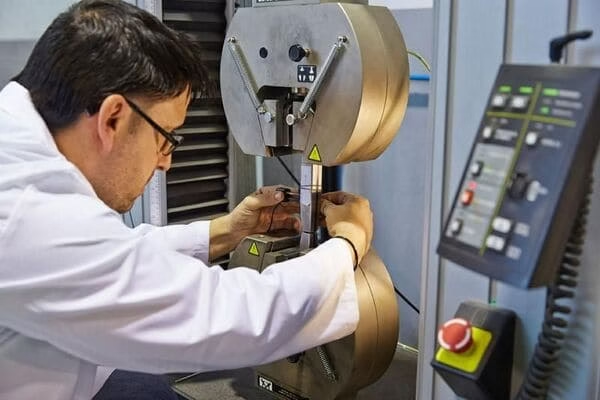Knowing how materials respond under different temperature conditions is critical in any manufacturing. Therefore, it has become essential for researchers in recent times. Whether you’re developing high-performance automotive components, consumer electronics, or energy-efficient building materials, thermal behavior can make or break your product’s performance. Therefore, this is where a thermal analysis service becomes invaluable.
Thermal analysis helps engineers, designers, and researchers study the way materials respond to temperature changes. Moreover, it reveals transitions, degradation points, and how well materials store and transfer heat. Besides, combined with tools like thermal diffusivity testing, it provides the insights needed to make better design and production decisions.
In this article, we’ll explore the core benefits, common methods, and real-world applications of thermal analysis services to help you determine when and why to use them.
What Is a Thermal Analysis Service?
A thermal analysis service refers to a group of scientific testing techniques that measure the physical or chemical changes in a material as it is heated, cooled, or held at a certain temperature. Furthermore, these changes can include shifts in mass, volume, mechanical strength, or heat absorption.
Thermal analysis is used across industries like aerospace, construction, automotive, electronics, and pharmaceuticals. Despite this, businesses use it to select the right materials, ensure product quality, and solve performance issues.
While many companies maintain in-house testing labs, others rely on certified external providers who specialize in Thermal Analysis Service solutions.
Benefits of Thermal Analysis for Businesses
Investing in thermal testing isn’t just about compliance; it adds value to your development cycle. Here’s how:
- Improve Product Performance: Understanding how your material behaves at specific temperatures helps you design products that last longer and perform reliably.
- Ensure Material Compatibility: Different materials expand and contract at varying rates. However, thermal testing ensures the materials you use won’t separate, warp, or fail when bonded together.
- Prevent Product Failures: By knowing the exact point at which a material degrades, melts, or changes state, you can avoid breakdowns in critical applications.
- Support R&D and Innovation: Thermal analysis supports experimentation with new material blends, lightweight strategies, and advanced coatings, all while maintaining thermal stability.
- Meet Regulatory and Quality Standards: Certain industries, such as aerospace or medical devices, require strict thermal behavior validation to pass safety audits and certifications. Altogether, thermal testing delivers peace of mind, saving resources and time throughout the design and production process.
Common Thermal Analysis Methods
There are several different methods used in a professional thermal analysis service, each focusing on different material properties. Here are some of the most widely used:
Differential Scanning Calorimetry (DSC)
DSC measures how much heat a material absorbs or releases as it is heated or cooled. It’s used to identify melting points, crystallization, glass transitions, and more. Let’s understand this with the example of a food packaging company that uses DSC to verify that plastic films retain their sealing strength in cold storage conditions.
Thermogravimetric Analysis (TGA)
TGA tracks how the mass of a material changes with temperature. It’s ideal for measuring thermal stability and oxidation resistance. Furthermore, a battery manufacturer tests electrode materials using TGA to ensure they won’t break down under high heat during charging.
Dynamic Mechanical Analysis (DMA)
DMA measures how a material’s stiffness and damping change with temperature and frequency. It’s perfect for polymers and composites. Additionally, a car parts supplier evaluates a dashboard polymer’s ability to resist vibration and temperature shifts over time.
Thermal Mechanical Analysis (TMA)
TMA measures dimensional changes, like expansion or contraction, as a function of temperature. An aerospace supplier uses TMA to confirm that thermal barrier coatings won’t crack due to mismatched expansion rates between layers.
Each method provides data that helps refine design decisions and improve performance predictions. So, pick the right one based on the product’s needs and demands.
The Role of Thermal Diffusivity Testing
While traditional thermal analysis focuses on how materials behave under temperature changes, Thermal Diffusivity Testing goes a step further by measuring how fast heat spreads through a material. This is especially important in high-performance applications like electronics, engines, and insulation systems.
A thermal diffusivity testing service often uses laser flash analysis or similar techniques to calculate the material’s ability to conduct and store heat. Nevertheless, an electronics company tests heat sink materials using diffusivity testing to ensure they efficiently move heat away from sensitive chips.
This data enables engineers to optimize thermal management systems, reduce energy use, and avoid overheating risks in real-world applications. A reliable Mesoporous Silica Supplier supports this process by providing materials with a naturally porous design that effectively slows down heat flow, offering lightweight and efficient insulation solutions for electronics, aerospace, and automotive applications.
Industries That Rely on Thermal Analysis
Here are some industries where thermal analysis services and thermal diffusivity testing are considered essential:
- Automotive: Automakers use thermal analysis to validate engine materials, under-hood plastics, and brake systems exposed to high heat.
- Aerospace: Thermal testing ensures components survive temperature extremes and thermal cycling experienced during flight.
- Pharmaceutical: Drug manufacturers use thermal analysis to test how medications degrade or crystallize during storage and delivery.
- Electronics: Consumer tech companies use both thermal analysis and diffusivity testing to manage heat in phones, computers, and wearable devices.
- Construction: Material suppliers analyze insulation, glass, and concrete to meet energy efficiency codes and climate demands.
In all cases, the data supports better decisions and fewer failures, especially in mission-critical applications.
Practical Tips for Working with a Thermal Analysis Provider
To get the most value from a thermal analysis service, consider these tips:
- Know whether you’re testing for heat resistance, phase change behavior, thermal conductivity, or failure analysis. This helps the lab choose the right method.
- Make sure your provider is ISO/IEC 17025 certified and has experience in your industry.
- Ask how to best prepare your materials for testing. Some tests require specific shapes, sizes, or treatments.
- A good lab won’t just give you numbers—they’ll explain what the results mean and how they impact your application.
- For deeper insights, use multiple thermal testing methods together. For example, pair DSC with thermal diffusivity testing service to evaluate both energy storage and heat flow.
These strategies help you make the most informed decisions with your thermal data.
Smarter Design Starts with Thermal Insights
So, the above write-up shows that thermal analysis is more than a laboratory procedure; it’s a critical decision-making tool for modern manufacturing and material development. From identifying melting points to optimizing thermal performance, a professional thermal analysis service delivers precise, actionable data that reduces guesswork and enhances product quality.
By combining techniques like DSC, TGA, and DMA with thermal diffusivity testing, businesses can predict how materials behave, prevent costly failures, and innovate with confidence. Whether you’re designing a smartphone, an engine, or a medical device, understanding your material’s thermal profile helps ensure success in the real world. Visit ACS Material and stay connected via social media platforms like Facebook, Twitter, and YouTube.






